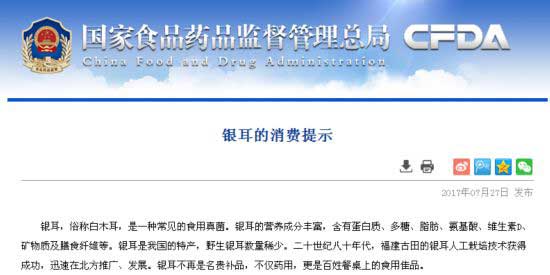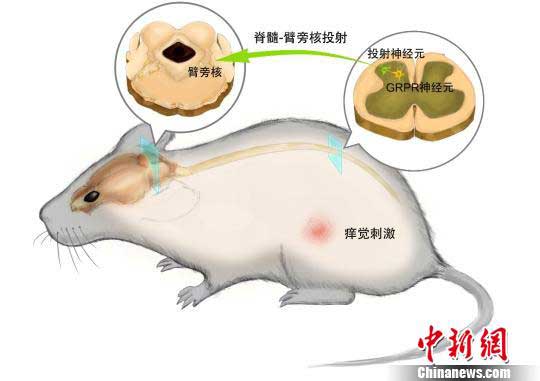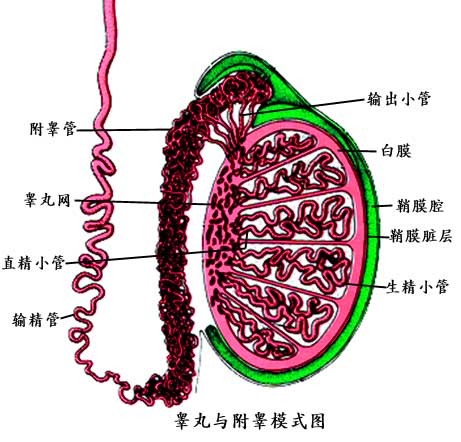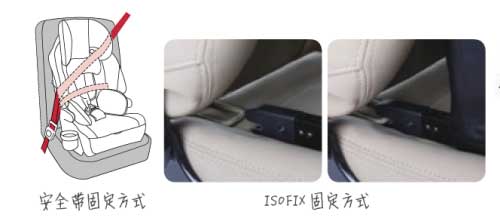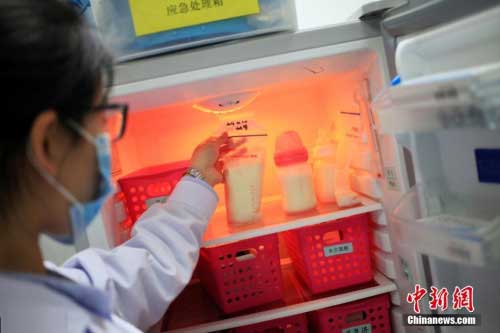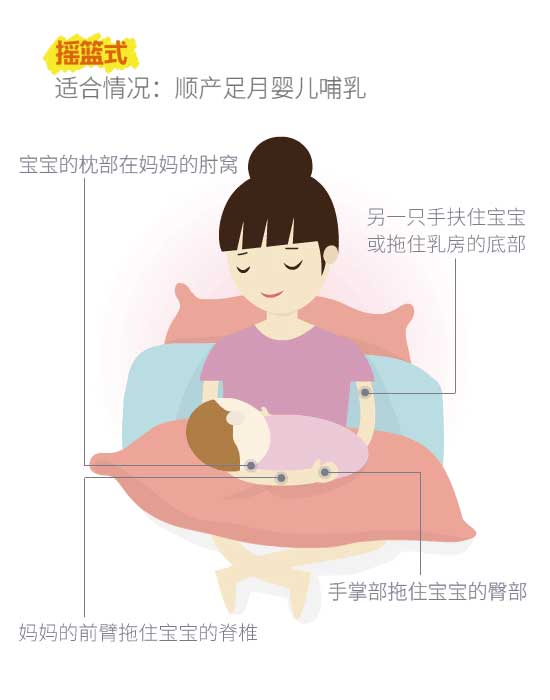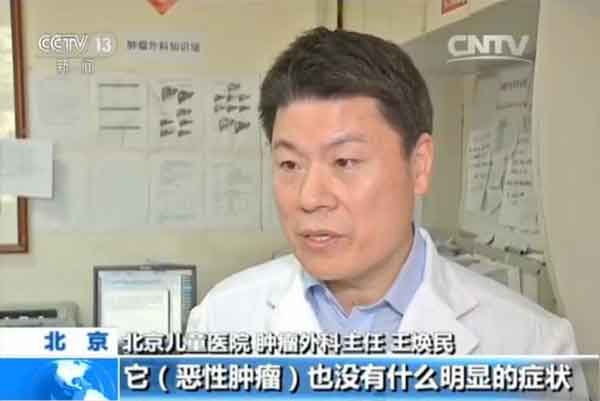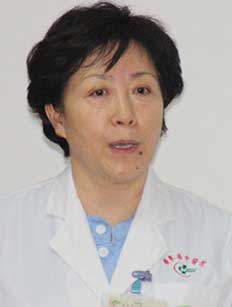双侧苍白球切开术治疗原发性帕金森病
中华外科杂志 2000年第3期第38卷 英文原著
作者:李勇杰 石常青 邵明
单位:首都医科大学宣武医院;北京功能神经外科研究所,北京 100053,中国
关键词:帕金森病;立体定位技术
bilateral pallidotomy for treatment of idiopathic
parkinson′s disease
li yongjie(李勇杰), shi changqing(石长青), shao ming(邵明), ding yuji(丁育基)
abstract:objective to clarify the benefits and risks of patients undergoing bilateral posteroventral pallidotomy (bpvp) for patients with idiopathic parkinson′s disease (pd) and the differences between contemporaneous bpvp (cbpvp) and staged bpvp (sbpvp).
methods twenty patients underwent microelectrode-guided cbpvp and 26 sbpvp for bilateral pd symptoms. the data were retrospectively reviewed. unified parkinson′s disease rating scale (updrs) was used to evaluate the effects of these operations.
results bpvp, either cbpvp or sbpvp, significantly improved patients′ bilateral pd symptoms (p<0.001). the improvement was consistently higher in “off” state than in “on” state. no statistical difference was observed in the improvement percentages of cbpvp, sbpvp1 and sbpvp2. cbpvp contributed greatly to l-dopa induced side effects (part iv). bpvp, sbpvp1, and sbpvp2 significantly improved cardinal parkinsonian signs but no difference was found among them. one patient after cbpvp developed hypophnia and swallowing problem, while 2 patients after sbpvp sustained hypophnia. these conditions were improved 3 months later.
conclusions bpvp may significantly improve bilateral signs of pd. it is safer than bilateral thalamotomy. cbpvp is applicable to some patients. bpvp may not cause mental impairment but shows a higher incidence rate of hypophnia. the practice of bpvp requires a refined surgical technique and a better understanding of pathophysiology of the basal ganglia.
key words:parkinson disease; stereotac techniques
摘 要:目的 客观评估双侧苍白球腹后部切开术(bpvp)治疗原发性帕金森病(pd)的疗效,探讨其必要性和利弊。 方法 46例具双侧pd症状的患者接受了微电极导向的双侧苍白球手术。其中,20例cbpvp,26例sbpvp。sbpvp又分为首次手术sbpvp1和第二次手术sbpvp2,二者间隔3~12个月,平均6.5±2.4个月。患者的hohn和yahr评分均在2.0以上。采用pd病情评估的updrs方法,对手术前后和“开、关”4种状态进行评分。统计分析bpvp手术前后症状改善情况的组内差异, cbpvp、sbpvp1和sbpvp2之间的组间差异,以及并发症的发生类型和高低情况。 结果 cbpvp、sbpvp1以及sbpvp2均明显改善患者的整体病情和典型症状(震颤、僵直和行动迟缓,p<0.001),它们对“关”状态的改善总是高于对“开”状态的改善。与sbpvp1或sbpvp2相比,cbpvp有着较高的改善率,但未达到统计学差异。分期手术对updrs的第4部分即左旋多巴类药物治疗副作用的改善明显低于同期手术(p<0.05)。手术未发生脑出血、视野缺损和肢体力弱等苍白球手术较常见的并发症,也未发现与双侧手术相关的认知障碍。cbpvp组1例患者术后明显语音低下、吞咽困难,sbpvp组2例患者出现语音低下。3个月后随访,以上并发症有所缓解但未完全恢复。 结论 对于存在明显的双侧症状的苍白球手术适应症范围内的原发性pd患者,bpvp是必要的手术方法,也是相当一部分患者必然的选择。
parkinsonian symptoms mostly appear at one side of body and then develop to the other side several years later. many neurosurgeons assumed that unilateral operation for bilateral symptoms was “half the job”. however, bilateral thalamotomy has not been advisable since the last decade because of a relatively rough surgical techniques at early stage and complications following a second side thalamotomy in particular such as permanent dysarthria and severe mental impairments.[1-3] similarly, the advisability of bilateral pallidotomy is doubted by many clinicians even though no one at this time questions the effectiveness of leksell′s target pallidotomy recurred by laitinen.[4,5] reports on the results of bilateral pallidotomy have been rare in the recent literature. a survey on the practice of pallidotomy in north america in 1996 showed that 20% of 1015 patients who underwent pallidotomy had bilateral procedures either staged (7%) or contemporaneous (13%), but the clinical results were not reported.[6] mixed “feeling” about the results of bilateral pallidotomy has been evident in peer-reviewed medical journals and at international meetings. to clarify the benefits and risks of bilateral pallidotomy for patients with idiopathic pd, we retrospectively reviewed our experiences with staged bilateral posteroventral pallidotomy (sbpvp) and contemporaneous bilateral posteroventral pallidotomy (cbpvp). it is expected that evaluating patients with updrs pre- and postoperatively will provide scientific evidences for clinical application of bilateral pallidotomy.
methods
patients
from july 1998 to december 1999, a total of 46 patients with idiopathic pd were subjected to cbpvp(n=20) or sbpvp(n=26) at the beijing institute of functional neurosurgery, xuanwu hospital. they accounted for 8.8% of 520 patients who received pallidotomy at the same period. two experienced neurologists also screened the patients referred for pallidotomy. inclusion criteria included a history compatible with idiopathic pd, two of the four cardinal symptoms (rest tremor, rigidity, akinesia/bradykinesia and axial symptoms), and a clear history of significant responsiveness to levodopa. all of the patients were given systematic therapy of madopar and some dopamine receptor agonist therapy as well. exclusion criteria were neurological signs suggestive of secondary forms of parkinsonism and parkinson plus.
in the cbpvp group, the mean age of the 20 patients was 52.5±9.6 years (range, 35-66) and the mean duration of pd was 10.2±4.1 years (range, 5-24) at the time of surgery. a hoehn %26 yahr score while off medication was 2.0 (n=12), 2.5 (n=7) and 5.0 (n=1) respectively. l-dopa therapy lasted for 5.5±2.4 years (range 2-12 years). all of the patients had tremor either at one side or both sides. six patients developed significant “on/off” fluctuation or/and dyskinesias. of the cbpvp patients, 9 (45%) were of “juvenile-type” with early-onset pd (symptoms before 40 years age).
in the sbpvp group, the mean age of the 26 patients was 58.3±7.7 years (range, 32-72) and the mean duration of pd was 8.3±5.0 years (range, 2-20). a hoehnl yahr score while off medication was 2.0 (n=14), 2.5 (n=9), 3.0 (n=2) and 4.0 (n=1) at the time of first side surgery (sbpvp1). the same dosage of levodopa was maintained for all patients after operation. the interval of the two operations was 6.5±2.4 months (range, 3-12).
surgery
a cosman-roberts-well frame was secured to patient′s skull under local lidocaine anesthesia and mri (seimens, tesla 1.0) was performed for initial stereotactic determinations of the target, using the locations of the anterior and posterior commissures (ac-pc line). our target for pvp lied within the globus pallidus interna (gpi), which was 2-3 mm anterior to the midpoint of acpc line, 4-7 mm below acpc line and 19-23 mm lateral to the midline. after the initial target was determined, a 10-mm burr hole was made on the coronal suture. a tungsten microelectrode (impedance, 300-600 kω) was introduced into the brain. extracellular recording started 10 mm above the initial target. amplified and filtered spontaneous action potentials were displayed on an oscilloscope and played over an audio monitor. the microelectrode was advanced out of a guide tube toward the target with an electronic microdrive. according to the characteristics of neuronal discharge frequencies and patterns of gpie, intralaminar border cells, gpii, ansa lenticularis, and optic tract, the final target was identified. only after an electrophysiological confirmation was done, the initial anatomic target could be the final target to make lesions. a 1.1 by 2 mm radionic thermocouple radiofrequency lesion probe was then used to replace microelectrode and macrostimulation was performed right before lesioning to avoid possible damage to the target adjacent important structures (internal capsule and optic tract). the lesion was made at temperatures of 60-85 ℃ for 60-90 seconds.
evaluations
two experienced neurologists who were not among the surgical team conducted patient evaluations independently. the updrs was used to evaluate neurologically preoperative baseline and postoperative change within one week before and after surgery. follow-up assessments of cbpvp were made on 3 patients 1 year after surgery. they were tested in “on”state (maximal therapeutic benefit) and “on” state (no antiparkinsonian medications overnight for at least 12 hours) respectively. the improvement percentages were calculated:
(updrspre-op-updrspost-op) / updrspre-op×100%
statistical analysis
the paired t test was used for comparison of improvements among the same groups, and t test for those among different groups of cbpvp, sbpvp1 and sbpvp2.
results
intraoperative changes were noticed immediately after the lesion probe was introduced at the electrophysiologically confirmed target. the mechanically affected improvements of tremor, rigidity and akinesia lasted several minutes and seemed to occur at right side surgery more often. after surgery, most patients walked out operation room without assistance. all of the patients were benefited from either cbpvp or sbpvp.
total updrs scores and their comparisons
cbpvp group
updrs values before and after operation were 41.1%±15.8% and 21.7%±12.3% respectively in the “on” state, which contributed to an improvement of 48.6%±18.7% (p<0.001), and 88.1%±18.2% and 35.0%±13.3% in the “off” state, with any improvement of 61.1%±10.9% (p<0.001).
sbpvp1 group
updrs values before and after operation were 45.3%±20.9% and 28.8%±16.5% respectively in the “on” state, which contributed to an improvement of 35.0%±14.6% (p<0.001), and 87.2%±25.1% and 48.1%±21.9% in the “off” state, with an improvement of 46.3%±15.9% (p<0.001).
sbpvp2 group
updrs values before and after operation were 32.7%±16.0% and 19.3%±11.2% respectively in the “on”state with an improvement of 44.6%±20.1% (p<0.001), and 54.9%±23.6% and 29.5%±15.1% in the “off” state with an improvement of 47.1%±17.6% (p<0.001).
the improvements or changes of updrs values are demonstrated in figs. 1 and 2a,b. compared to sbpvp1 or sbpvp2 respectively, cbpvp had a marked improvement but did not reach a significant change. in fig 2b, a slight returning of updrs values was noticed between post-sbpvp1 and pre-sbpvp2 in both “on” and “off” states. even though the change did not have a significant meaning, it is most likely to be a sign of the progressing disease at the other side.
three cases of cbpvp were followed up for one year. the preliminary data of updrs are also showed in fig. 2a. a more detailed follow-up study is under way and will be reported later.
fig.1 comparisons of surgical improvements of total updrs scores following cbpvp, sbpvp1 and sbpvp2 in both “on” and “off” state.
fig.2 a trenddem onstration of updrs values after cbpvp and at an one-uear one-year follow-up (fig.2a),updrs values after sbpvp1 and sbpvp2(fig.2b).
subscale updrs scores
to compare how bpvp improves the 4 parts of updrs respectively among the groups of cbpvp, sbpvp1 and sbpvp2, we further analyzed the subscale updrs scores (fig. 3). there were no significant differences among the 3 groups except for part iv (p<0.05).
cardinal parkinsonian signs
akinesia, rigidity, and tremor from items 23-27 plus 31, item 20 and item 22 of updrs were quantitatively evaluated (fig.4). bpvp significantly improved these cardinal parkinsonian signs, but no significant differences were observed among the groups of cbpvp, sbpvp1 and sbpvp2.
fig 3. comparisons of surgical improvements of subscale updrs scores following cbpvp, sbpvp1 and sbpvp2. a significant difference existed among part iv(p<0.05).
fig 4. improvement percentages of three cardinal parkinsonian signs following bpvp. akinesia was represented with a. akinesia in “off” state with aoff t with tremor and r with rigidity respectively.
adverse effects
among the 46 patients, several surgical complications were observed. in the cbpvp group, one patient developed hypophnia and swallowing problem. these conditions were improved, but did not show a full recovery at 3 months' follow-up. in the sbpvp group, 2 patients developed hypophonia. no hemorrhage, hemiparalysis, and visual field deficit were observed. transient sleepiness existed in several elder patients, but no marked mental impairments were found. six patients had transient contralateral facial weakness.
discussion
the better understanding of pathophysiology of the globus pallidus (gp) and the advances in stereotactic technology have made the posteroventral part of the gp become the best target for the treatment of idiopathic pd in the past years. the safeness and effectiveness of surgery have been greatly enhanced because of the application of intraoperative microelectrode recording, which can localize the target within 1 mm. bpvp is required to improve bilateral symptoms of pd patients. however, controversy exists about the benefits and risks of cbpvp compared to sbpvp. the general concept is that if the second side surgery has to be done, the interval of the two operations should be more than 6 months.
our results showed that both cbpvp and sbpvp have significant improvement in pd patients. there was no statistical difference in the improvement of cbpvp and sbpvp group, indicating that cbpvp improves bilateral parkinsonian symptoms as effectively as sbpvp. the improvement in the “off” state was higher than that in the “on” state, which is consistent with other reports.[7] cbpvp contributed greatly to the treatment of l-dopa side effects (part iv, p<0.05).
regardless of regular complications of stereotactic neurosurgery such as intracranial hemorrhage and extremity weakness, bilateral brain surgery including thalamotomy and pallidotomy makes neurosurgeons nervous and cautious. there have been many evidences demonstrating that bilateral thalamotomy may cause high incidence of dysarthria and cognitive impairment. however, bilateral pallidotomy is different from bilateral thalamotomy and seems to be a much safer procedure. our results showed that there is no increased cognitive impairment after bpvp. compared with unilateral pallidotomy, bpvp has an increased risk of hypophonia. these results were supported by taha and scott′s reports.[8,9] however, the complication rate of cbpvp was not higher than that of sbpvp. it is meant that if bilateral pallidotomy has to be done, there is no significant complication difference between cbpvp and sbpvp. it is noteworth noting that 3 of our earliest series of 16 patients had hypophonia. this may be contributed to the improvement of our surgical technique, that is a more lateral target selection recommended.iacono and his colleagues [10] reported 68 cases of cbpvp (n=49) and sbpvp (n=19). compared with unilateral pallidotomy, bpvp was not associated with an increased risk of severe complication.
in conclusion, bpvp can significantly improve bila-teral signs of pd.bpvpv is much safer than bilateral thalamotomy. sbpvp is not necessarily for all patients. if the patient is younger and in a good general condition to tolerate a longer duration of operation, cbpvp is advi-sable. cbpvp may relieve both sides' symptoms at once and save patient's medical cost. bpvp may not cause cognitive deficit, but does have a higher complication rate of hypophonia. the practice of bpvp requires meticulous surgical technique that is based on surgeon's experience, intraoperative confirmation of lesion probe position, patient's cooperation, and more importantly a better understanding of pathophysiology of the basal ganglia.
基金项目:国家科委资助项目(96-920-06-05-17);北京市科委资助项目(953304001)
references:
[1]jankovic j, cardoso f, gross rg, et al. outcome after stereotaxic thalamotomy for parkinsonian, essential, and other types of tremor. neurosurgery, 1995, 37:680-687.
[2]matsmoto k, shichijo f, fukami t. long-term follow-up review of cases of parkinson′s disease after unilateral or bilateral thalamotomy. j neurosurg, 1984, 60:1033-1044.
[3]wester k, hauglie-hanssen e. stereotaxic thalamotomy experiences from the levodopa era. j neurol neurosurg psychiatry, 1990, 53:427-430.
[4]laitinen lv, bergenheim at, hariz mi. leksell′s postereoventral pallidotomy in treatment of parkinson's disease. j neurosurg, 1992, 76:53-61.
[5]li yj,iacono rp. microelectrode-guided postereoventral pallidotomy for parkinson′s disease: a clinical study of 100 cases. chin j surg, 1998, 36:603-605.
[6]favre j, taha jm, nguyen tt, et al. pallidotomy: a survey of current practice in north america. neurosurgery, 1996, 39:883-892.
[7]baron ms, vitek jl, bakay ra, et al. treatment of advenced parkinson′s disease by posterior gpi pallidotomy: 1-year results of a pilot study. ann neurol,1996, 40:355-366.
[8]taha mj, favre j, burchiel k. bilateral pallidotomy for the treatment of parkinson′s disease. in:eds.krauss jk et al. pallidal surgery for the treatment of parkinson′s disease and movement disorders. lippincott raven publishers, 1998.173-178.
[9]scott r, gregory r, hines n, et al. neuropsychological, neurological and functional outcome following pallidotomy for parkinson′s disease: a consecutive series of eight simultaneous bilateral and twelve unilateral procedures. brain 1998, 121:659-675.
[10]iacono rp, shima f, lonser rr, et al. the results, indications and physiology of posteroventral pallidotomy for patients with parkinson′s di-sease. neurosurgery, 1995, 36:1118-1127.
收稿日期:1999-12-29



